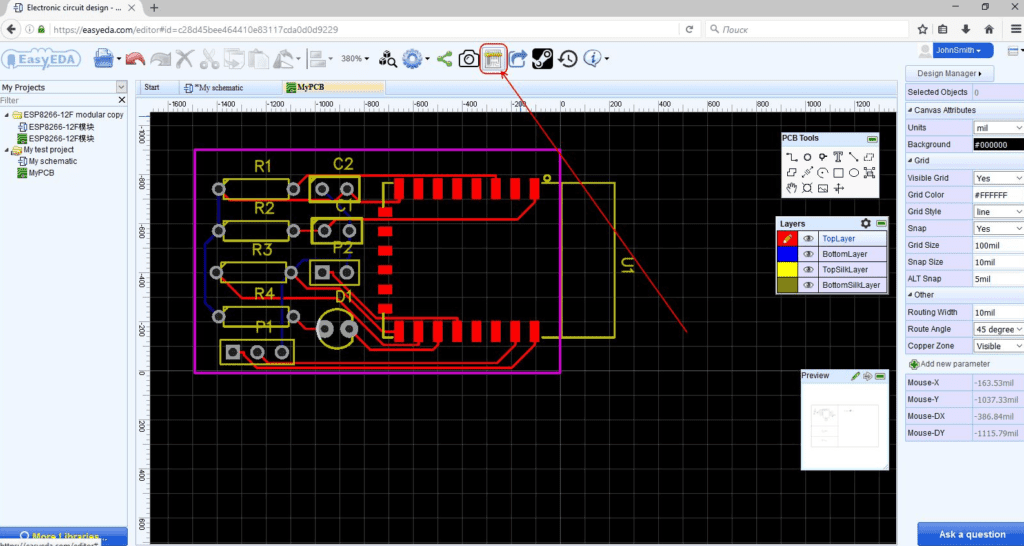MOSFETs are an essential component in modern electronics, providing a fast, efficient way to control the flow of current. However, designing an effective MOSFET PCB layout can be a challenging task. A poorly designed layout can result in issues such as thermal runaway, parasitic capacitance, and inductance, which can cause the MOSFET to fail prematurely.
One of the key considerations when designing a MOSFET PCB layout is the placement of the MOSFET itself. MOSFETs generate a significant amount of heat, so it’s essential to ensure that they are positioned in a location that allows for effective heat dissipation. This may involve placing the MOSFET near a heatsink or using a thermal pad to help dissipate heat away from the MOSFET. Additionally, it’s important to ensure that the MOSFET is positioned in a location that minimizes parasitic capacitance and inductance, which can cause unwanted oscillations and noise.
Another important consideration when designing a MOSFET PCB layout is the routing of the circuit traces. MOSFETs require a low-inductance path for the gate drive signal, which can be achieved by using short, wide traces. Additionally, it’s important to ensure that the current-carrying traces are wide enough to minimize resistance and heat buildup. By carefully considering the placement of the MOSFET and the routing of the circuit traces, it’s possible to design an effective MOSFET PCB layout that provides reliable, efficient performance.

Basics of MOSFET PCB Layout
MOSFET Layout Considerations
When designing a PCB layout for MOSFETs, there are several key considerations to keep in mind. First and foremost, it is important to ensure that the MOSFETs are properly cooled to prevent overheating. This can be achieved by using thermal vias or heat sinks, and by spacing the MOSFETs apart to allow for proper airflow.
Another important consideration is the placement of the MOSFETs on the PCB. MOSFETs should be placed as close as possible to the power source and load to minimize resistance and reduce noise. Additionally, it is important to route the gate and source connections as short and direct as possible to minimize parasitic inductance and capacitance.
PCB Layout Guidelines for MOSFETs
When laying out a PCB for MOSFETs, there are several guidelines that can help ensure optimal performance. These include:
- Keeping the gate and source connections as short and direct as possible to minimize parasitic inductance and capacitance.
- Placing the MOSFETs as close as possible to the power source and load to minimize resistance and reduce noise.
- Using thermal vias or heat sinks to properly cool the MOSFETs and prevent overheating.
- Ensuring that the MOSFETs are properly grounded to minimize noise and improve performance.
- Using a ground plane to minimize parasitic capacitance and improve signal integrity.
By following these guidelines, designers can create a PCB layout that maximizes the performance and reliability of MOSFET circuits.
Common MOSFET PCB Layout Issues
Thermal Issues
One of the most common issues with MOSFET PCB layout is thermal management. MOSFETs generate heat during operation, and if the heat is not dissipated properly, it can cause the MOSFET to fail prematurely. To avoid this issue, it is important to ensure that the MOSFET is mounted on a heat sink that has sufficient thermal conductivity. The heat sink should be large enough to dissipate the heat generated by the MOSFET, and it should be connected to a thermal pad on the PCB.
Another way to manage thermal issues is to use vias to connect the top and bottom layers of the PCB. This allows heat to be dissipated more efficiently, reducing the temperature of the MOSFET and increasing its lifespan.
EMI/EMC Issues
EMI/EMC issues are another common problem with MOSFET PCB layout. MOSFETs generate high-frequency noise during switching, which can interfere with other components on the PCB and cause malfunctions. To avoid this issue, it is important to use proper grounding techniques and to keep the MOSFET as far away from sensitive components as possible.
One effective way to reduce EMI/EMC issues is to use a snubber circuit. A snubber circuit is a simple circuit that consists of a capacitor and a resistor connected in series. The snubber circuit can be connected across the MOSFET to absorb the high-frequency noise generated during switching.
In summary, MOSFET PCB layout issues can be managed by paying close attention to thermal management and EMI/EMC issues. By using proper grounding techniques, heat sinks, and snubber circuits, it is possible to design a PCB that is reliable and free from issues.
Advanced Techniques for MOSFET PCB Layout

When designing a MOSFET circuit, PCB layout is a crucial aspect to consider. Advanced techniques can help improve the performance and reliability of the circuit. Here are two essential techniques to consider:
High-Frequency PCB Layout Techniques
High-frequency circuits require special attention to ensure that signal integrity is maintained. Here are some techniques to consider when designing a high-frequency MOSFET circuit:
- Grounding: Ensure that the ground plane is continuous and connected to the power supply ground. Use vias to connect the top and bottom ground planes.
- Component Placement: Place components as close as possible to the MOSFET to minimize parasitic inductance and capacitance.
- Routing: Keep high-frequency traces as short as possible and avoid sharp bends. Use 45-degree angles instead of 90-degree angles.
Mixed-Signal PCB Layout Techniques
Mixed-signal circuits are those that contain both analog and digital components. To prevent interference and ensure signal integrity, consider the following techniques:
- Separation: Separate analog and digital components into different sections of the PCB. Use a ground plane between the sections to prevent interference.
- Filtering: Use RC filters to filter out high-frequency noise from the power supply and signals.
- Component Placement: Place components in a way that minimizes noise coupling between analog and digital sections.
By implementing these advanced techniques, you can improve the performance and reliability of your MOSFET circuit.

